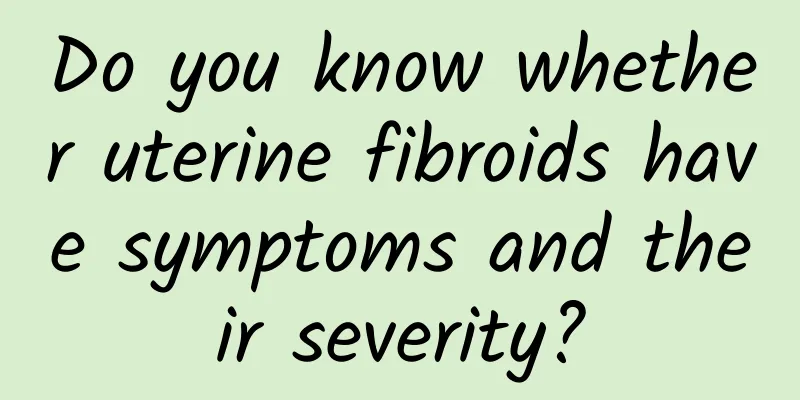Do you know whether uterine fibroids have symptoms and their severity?

|
Whether uterine fibroids have symptoms and their severity are mainly determined by the location, size, number and complications of the fibroids. Do you know the symptoms of uterine fibroids? Don't worry, let our experts briefly introduce the symptoms of uterine fibroids to you, hoping to help you! Symptoms of uterine fibroids experts introduce to you: Clinically, we also see that some patients have small intramyomas, and the endometrial pathology report of curettage shows secretory endometrium, but there are bleeding symptoms, or some patients with subserosal uterine fibroids also have uterine bleeding symptoms. These are difficult to explain by enlarged endometrial area, poor uterine contractions, or dysfunctional uterine bleeding, and the increasingly important concept of congestion and dilation of the endometrial venous plexus is quite convincing. The idea is that there are rich blood vessels distributed in the subserosa, intramural and endometrium of the uterus. Whether the fibroids grow under the mucosa, intramural or subserosa, they may compress the veins near the tumor, causing congestion and dilation of the endometrial venous plexus, thereby causing menorrhagia. The most prominent clinical symptom of submucosal uterine fibroids is uterine bleeding. Some people believe that the bleeding is caused by ulcers on the surface of the fibroids. However, submucosal fibroids with ulcers are rare, while abnormal bleeding is common. Therefore, it is more effective to explain it by congestion and dilation of the endometrial venous plexus. Sometimes, the rupture and bleeding of the enlarged veins on the surface of the submucosal fibroids of the uterus can directly lead to heavy bleeding. The above explanations are all reasonable and not contradictory. Combined with the specific patient, the cause of uterine bleeding may be mainly due to one factor or the result of the synergistic effect of several factors. In recent years, it has been believed that the regulation disorder of growth factors or their receptors such as basic fibroblast growth factor (bFGF), vascular endothelial growth factor (VEGF), epidermal growth factor (EGF) produced by uterine fibroids and muscle wall tissue has a direct impact on vascular function and generation, causing abnormal uterine vascular structure and leading to excessive menstruation. The above is a brief introduction of the symptoms of uterine fibroids by experts. Do you know them? If you have any questions about uterine fibroids, please consult our online experts. We will serve you wholeheartedly! Uterine fibroids: http://www..com.cn/fuke/zgjl/ |
<<: Women's health starts with paying attention to the ovaries
>>: Daily care of vulvar leukoplakia
Recommend
Effectively relieve dysmenorrhea from daily life
Dysmenorrhea is not unfamiliar to everyone. Perha...
What are the factors for recurrence of pelvic peritonitis?
Pelvic peritonitis refers to inflammation of the ...
Does mild cervical erosion need treatment? There are three types of cervical erosion.
When estrogen is secreted in women, it will cause...
The main causes of adnexitis in women
Adnexitis is a common disease among women. Nowada...
Characteristics of hysteroscopic embryo retrieval for artificial abortion
Painless abortion has been increasingly used in r...
Vulvar leukoplakia should be differentiated from sclerosing atrophic lichen
Vulvar leukoplakia is similar to lichen sclerosus...
How to treat candidal vaginitis
The incidence of candidal vaginitis in women is a...
What is the reason why menstruation has not come yet?
What is the reason why menstruation has been dela...
What is the standard for cure of endometrial tuberculosis?
Surgical treatment is currently the main method f...
Analyze the factors that lead to chronic adnexitis
Chronic adnexitis is a type of adnexitis. There i...
Can I still have an abortion after three months?
Artificial abortion can still be performed within...
Why does pelvic inflammatory disease recur?
Why does pelvic inflammatory disease recur? There...
How to make chicken breast more tender and delicious? Experts teach you 5 pickling methods
Low-fat, high-protein chicken breast is a favorit...
Obesity is the root of all diseases, and it is difficult to lose weight if you have weak genes! Recognize the 5 major obesity physiques, losing weight is no longer difficult
Obesity is the root of all diseases! According to...









